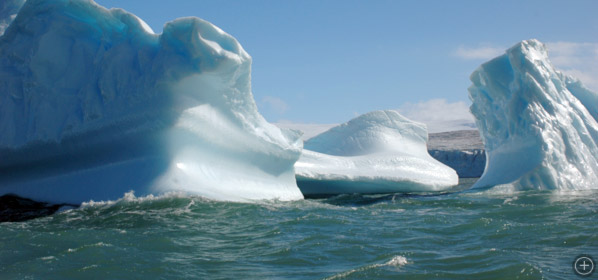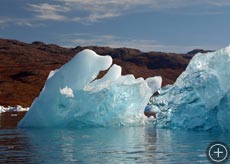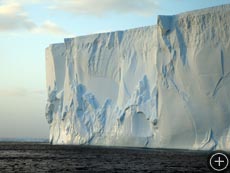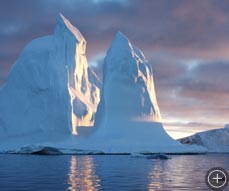Icebergs
“It’s just the tip of the iceberg.” That’s what we say when there’s more to something—plenty more—than meets the eye.
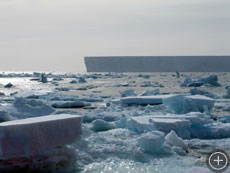
Tabular icebergs like this one in the background typically have a length-to-height ratio of more than 5:1.
In fact, the phrase is scientifically accurate. An iceberg is a piece of freshwater ice that has broken off, or “calved,” from a glacier or ice shelf. Since the density of ice is just 90% that of seawater, only about a tenth of the total volume of an iceberg is above water. In short, what you see of an iceberg is generally only about a tenth of what’s there.
Icebergs range in size from as small as several feet across—also called “growlers” or “bergy bits”—to many miles across. The largest iceberg ever recorded broke off from the Ross Ice Shelf in Antarctica in 2000. At 183 miles (295 km) long and 23 miles (37 km) wide, it weighed roughly 3 billion tons.
Once at sea, icebergs are carried by winds and currents as they slowly melt. Melting icebergs make a fizzing sound as air trapped inside the ice is released, air that was originally compressed—along with mounting piles of snow—to form glacial ice.
As an iceberg melts, minerals from land trapped in the ice are also released, causing a small ecosystem to flourish in the iceberg’s vicinity. Fed by nutrients such as iron, communities of phytoplankton bloom. In turn, krill, fish, and seabirds arrive to feed on and around the iceberg.
This life-giving aspect of icebergs is eclipsed by their more deadly aspect; that is, their danger to maritime travel. After the deadly sinking of the Titanic in 1912, an organization called the International Ice Patrol was formed to monitor iceberg dangers near shipping lanes and major ports.
Will global warming put the International Ice Patrol out of business? Hardly. Calving of icebergs is actually increasing worldwide as warming temperatures cause ice shelves in the Arctic and Antarctic to break up and float away.

